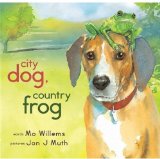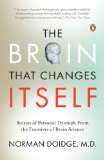Today I watched the complete webcast of ALA’s Youth Media Awards, and I was very happy. For the first time since the 2010 awards, both the Caldecott winner and the Newbery winner were Sonderbooks Stand-outs. And the winner of our library’s fledgling Mock Newbery Book Club vote got a Newbery Honor!
Although there were a lot of books I loved that didn’t appear, I am completely happy with the ones that did. Let me go through the lists, giving my reaction.
First, let me also say that I’m way behind in posting reviews. Tonight I blitzed through a stack and wrote 7 reviews, but now I have 69 reviews I’ve written that I still need to post. That’s down from 99 such reviews in December, but it’s still a daunting task, and I confess I’m letting a lot more books I read go unreviewed.
So my plan is to finish posting all the reviews of Sonderbooks Stand-outs tomorrow or the next day. Then I’ll tackle some of these award winners that I’ve already reviewed but not posted.
Let me go through the major awards, in the order they were announced. You can find all the award winners listed at ala.org. Please, if you’re reading this, I’d love to hear your own reactions. Which of the books have you read? Any big disappointments? Special thrills?
I haven’t read any of the Alex Awards, so I won’t go through those. Some I’d meant to read, so they make my To Be Read list longer.
I haven’t read any of the Schneider Family winners, though A Dog Called Homeless, by Sarah Lean, was chosen to be a Summer Reading Program selection for our library system.
Some people expressed surprise and disappointment that Wonder didn’t receive a Schneider Family Award. But I don’t think it was actually eligible. The Schneider Family Award is given “for books that embody an artistic expression of the disability experience,” and Auggie in Wonder mentions many times that he actually doesn’t have any disability — just a deformed face.
I’ve read one of the Stonewall Honor books, Drama, by Raina Telgemeier. I’ll post my review soon.
I’m kicking myself about the Stonewall Award Winner, Aristotle and Dante Discover the Secrets of the Universe, by Benjamin Alire Saenz. Because at an ALA conference I’d accidentally picked up not one, but two Advance Review Copies. But I didn’t get around to reading it before it was published, and I’ve given both copies away. Oh well!
For the Coretta Scott King Awards, I was happy about the Illustrator Honor for I Have a Dream, illustrated by Kadir Nelson. I’ll post my review of that soon. I’ve also read the Illustrator Winner, I, Too, Am America, illustrated by Brian Collier, which is a Capitol Choices selection, and I think it’s a wonderful choice.
I’ve read the CSK Author Honor books, but not the winner. I’ll post the review soon of No Crystal Stair, by Vaunda Micheaux Nelson. I wasn’t a fan of its Newbery chances, but I do think it’s an outstanding book, and am happy it got some honor today.
The Margaret Edwards Award winner for her body of work is Tamora Pierce. I read the Song of the Lioness quartet before I started reviewing books, and I’m happy about this choice. I will definitely plan to attend the Margaret Edwards Luncheon again this year.
For the Morris Award, the only one of the Finalists I’ve read, Seraphina, by Rachel Hartman, was the winner, and I’m very happy about that.
I’m currently in the middle of reading Bomb, which was first mentioned today as the winner of the YALSA Excellence in Nonfiction for Young Adults Award. I wasn’t surprised, because it’s gotten great buzz on the Heavy Medal blog. I’ve read all the other Finalists, and in fact they are all Sonderbooks Stand-outs in Children’s Nonfiction except for Steve Jobs: The Man Who Thought Different. Those Finalists were Moonbird, by Phillip Hoose; Titanic: Voices from the Disaster, by Deborah Hopkinson; and We’ve Got a Job, by Cynthia Levinson
I got a kick out of the Odyssey Honor for the audiobookGhost Knight, by Cornelia Funke. This was a book under consideration for the Cybils shortlist by my committee, and I was the only one who listened to it instead of reading it. I was a much bigger fan of the book than anyone else, and I think I was probably swayed by the wonderful audio recording.
I was also happy about the Odyssey Award Winner, The Fault in Our Stars, by John Green. Though I haven’t listened to the audio version, I loved the book, and the audiobook is a Capitol Choices selection this year.
Then came the Printz. Aristotle and Dante Discover the Secrets of the Universe was an Honor book, so I again kicked myself for not having read it.
My favorite book of the year, Code Name Verity, by Elizabeth Wein, did get a Printz Honor. And though I can’t fathom another book being better than it, I haven’t actually read the Printz winner or any of the other Printz Honors, so I have to reserve my righteous indignation and be happy that it did receive Honor.
I haven’t read any of the Pura Belpre honor books, but again Aristotle and Dante Discover the Secrets of the Universe was the big winner, so I received more kicks from myself.
The Arbuthnot lecture will be given by Andrea Davis Pinkney. Wouldn’t that be fun to attend!
I haven’t read any of the Batchelder winners.
The Sibert Medal almost completely overlapped with the ENYA Award. The Honor books were Electric Ben, by Robert Byrd (which I haven’t read completely but is a Summer Reading Program selection for our library system); Moonbird, by Phillip Hoose; and Titanic: Voices from the Disaster, by Deborah Hopkinson. The winner was (again) Bomb, by Steve Sheinkin.
The Wilder Medal for lifetime achievement was given to Katherine Paterson. Wonderful choice!
The Geisel Awards had my biggest disappointment. I wanted to see Penny and Her Song or Penny and Her Doll, by Kevin Henkes represented, and was sad that they weren’t. However, I was particularly happy with two of the Honor books, Let’s Go For a Drive! by Mo Willems (I always love his books), and Pete the Cat and His Four Groovy Buttons, by Eric Litwin, which was a 2012 Sonderbooks Stand-out.
And then came the biggies, the longest-established awards. For the Caldecott, I’ve read and appreciated Extra Yarn illustrated by Jon Klassen, written by Mac Barnett (despite the upside-down knitting needles), Creepy Carrots, illustrated by Peter Brown, written by Aaron Reynolds; One Cool Friend, illustrated by David Small, written by Toni Buzzeo, and Sleep Like a Tiger, illustrated by Pamela Zagarenski, written by Mary Logue. I count myself a fan of Green, by Laura Vaccaro Seeger, and that review will be forthcoming. But the winner, This Is Not My Hat, by Jon Klassen, was a Sonderbooks Stand-out and one of my favorite picture books of the year. Almost everyone at my library has read it already, because I pushed it on them.
And finally, my happiness overflowed with the Newbery announcements. I thought Splendors & Glooms had some flaws, but had to admit that the writing was outstanding, so I think it’s Honor was well-deserved. Bomb made its third appearance of the day, so I’m glad I’m currently reading it. But I was especially happy about the third Honor book, Three Times Lucky, because that was the selection of our library’s Mock Newbery Book Club. I had thought we’d picked a longshot, so I was so happy to see it up there. I wrote its review today, and will post it soon.
And the Newbery Medal winner? The wonderful The One and Only Ivan, by Katherine Applegate. When I first read The One and Only Ivan, I hoped it would win the Newbery. Since reading it, it got edged out in my hopes by Summer of the Gypsy Moths and Palace of Stone, but discussion on Heavy Medal and in Capitol Choices convinced me that those books probably weren’t serious contenders, so my hopes were riding on The One and Only Ivan again. So happy that those hopes were realized!
How about you? Which choices made you happiest? Which omissions made you saddest? Which books are hitting the top of your TBR piles? I’d love to keep discussing….
 After posting my 2012 Sonderbooks Stand-outs, I couldn’t help but notice that some names have come up again and again. So I’m doing a series of blog posts about those authors who have appeared on my Stand-outs lists before. And next up is Mo Willems, with a total of 8 Sonderbooks Stand-outs since 2003.
After posting my 2012 Sonderbooks Stand-outs, I couldn’t help but notice that some names have come up again and again. So I’m doing a series of blog posts about those authors who have appeared on my Stand-outs lists before. And next up is Mo Willems, with a total of 8 Sonderbooks Stand-outs since 2003. I discovered Mo with that wonderful classic, Don’t Let the Pigeon Drive the Bus It of course was a 2003 Sonderbooks Stand-out, my top choice for Picture Books.
I discovered Mo with that wonderful classic, Don’t Let the Pigeon Drive the Bus It of course was a 2003 Sonderbooks Stand-out, my top choice for Picture Books. Unfortunately, my kids were too old to appreciate the full power of the pigeon books, but I remember in 2006 when I stayed for a month and a half with my friend, I got to pull them out and read them to her kids. They especially liked it when I read the temper tantrum page. Another Pigeon book, Don’t Let the Pigeon Stay Up Late, made the 2006 Sonderbooks Stand-outs list, once again #1 for Picture Books.
Unfortunately, my kids were too old to appreciate the full power of the pigeon books, but I remember in 2006 when I stayed for a month and a half with my friend, I got to pull them out and read them to her kids. They especially liked it when I read the temper tantrum page. Another Pigeon book, Don’t Let the Pigeon Stay Up Late, made the 2006 Sonderbooks Stand-outs list, once again #1 for Picture Books. In 2008, I met Elephant and Piggie, and fell in love. This time, Mo had not one but three 2008 Sonderbooks Stand-outs. Are You Ready to Play Outside? was #5 in Picture Books, The Pigeon Wants a Puppy! was #6, and I Will Surprise My Friend! was #7. And I still like the essay I wrote about Are You Ready to Play Outside? and contentment (and, well, my ex-husband).
In 2008, I met Elephant and Piggie, and fell in love. This time, Mo had not one but three 2008 Sonderbooks Stand-outs. Are You Ready to Play Outside? was #5 in Picture Books, The Pigeon Wants a Puppy! was #6, and I Will Surprise My Friend! was #7. And I still like the essay I wrote about Are You Ready to Play Outside? and contentment (and, well, my ex-husband). My 2010 Sonderbooks Stand-outs had something new, a book written, but not illustrated, by Mo Willems, City Dog, Country Frog, which was #4 in Picture Books.
My 2010 Sonderbooks Stand-outs had something new, a book written, but not illustrated, by Mo Willems, City Dog, Country Frog, which was #4 in Picture Books. And finally, this year the Pigeon was back! In my 2012 Sonderbooks Stand-outs, The Duckling Gets a Cookie!? delightfully played with the themes from all the previous Pigeon books and hit #2 in my Picture Books list.
And finally, this year the Pigeon was back! In my 2012 Sonderbooks Stand-outs, The Duckling Gets a Cookie!? delightfully played with the themes from all the previous Pigeon books and hit #2 in my Picture Books list.










